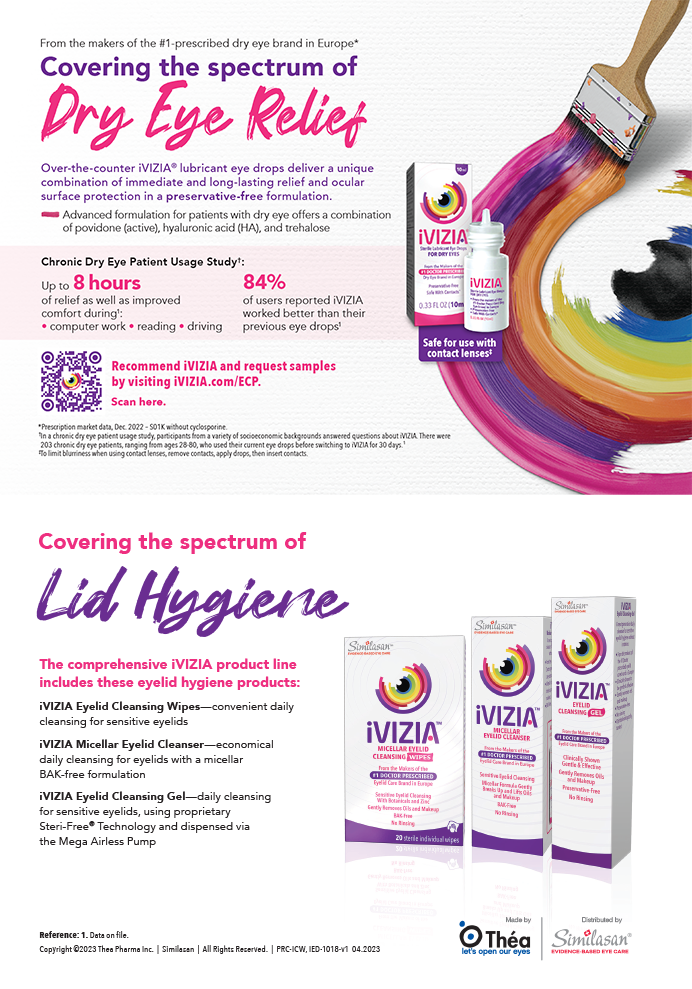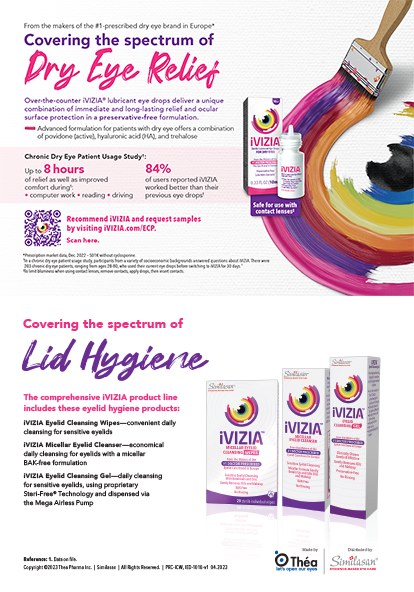Until recently, most ophthalmologists thought that it was proper to center hyperopic refractive laser procedures on the pupil versus the visual axis. This thinking originated when radial keratotomy (RK) was the only available refractive procedure. At that time, Uozato and Guyton1 argued the merits of centering treatment on the pupil. Because myopes usually lack angle kappa, however, the visual differences between centering on the pupil versus the visual axis were not apparent with RK. Later, Pande and Hillman2 showed that the best optical results are achieved by centering treatments not on the pupil but on the corneal light reflex, which is the closest approximation of the visual axis.
Hyperopic LASIK changed how surgeons center a refractive treatment. Hyperopes tend to have positive angle kappa; their visual axis is more nasally displaced within the pupillary area. Centering a hyperopic LASIK treatment on the pupil may cause the patient to focus through the edge of the ablation rather than its center. The error can cause suboptimal visual results and induce coma.
CLINICAL STUDYMy colleagues and I conducted a study demonstrating that centering hyperopic ablations on the visual axis (corneal light reflex) instead of the pupil3,4 produces consistently better results using the Ladarvision 4000 excimer laser (Alcon Laboratories, Inc., Fort Worth, TX). This approach ensures that the patient's fovea is aligned with the center of the ablation. There is little room for error with hyperopic treatments, because the steepness of hyperopic ablations means that the optical zones are not as wide as those in myopic LASIK treatments. We treated hyperopes with up to +6.00D of sphere and -5.00D of astigmatism. We retrospectively analyzed 61 eyes of 41 patients (17 females and 24 males). We then performed spherical corrections on 13 eyes and astigmatic corrections on 48 eyes. The mean patient age was 55.6 ±10.6 years (range, 20.8 to 70.7 years). No eye of any patient lost more than one line of BCVA.
CENTERING THE TREATMENTThe first step is to identify the visual axis. When the surgeon looks down through the coaxial microscope at the eye of a patient who is lying on the bed looking up at the fixation light, where the fixation light reflects off the cornea is effectively the visual axis. Most laser systems allow surgeons to center the ablation wherever they wish. For hyperopic LASIK, surgeons should look at the monitor and move the center of the ablation to coincide with the corneal fixation-light reflex.
It is also important for surgeons to ascertain whether they can see the fixation-light reflex on the stromal bed. If not, it may be necessary to determine secondary reference points (such as the surrounding white illumination lights) by which they can ensure that the treatment is centered on the fixation light, even after they have lifted the flap (Figure 1).
IMPLICATIONS
I think one reason why a number of surgeons recommend treating no more than +2.00D of hyperopia is that ablations of higher amounts will produce suboptimal results when they are centered on the pupil. Patients will have unwanted visual symptoms postoperatively, because the LASIK treatment will effectively be decentered. I believe that centering hyperopic LASIK treatments on the visual axis will increase surgeons' comfort with addressing higher degrees of hyperopia, because these ablations will not sacrifice visual quality.
CONCLUSION
Since our study, I have transitioned to centering all of my conventional hyperopic and myopic LASIK treatments on the visual axis. Similar to our study results, this centration technique is safe and effective in practice. For years, this has been my practice, and thus I routinely treat hyperopia with up to +6.00D of sphere and up to -5.00D of astigmatism. We also hope to determine the average decentration from an intended target of a laser treatment in LASIK.
Brian S. Boxer Wachler, MD, is Director of the Boxer Wachler Vision Institute in Beverly Hills, California. He is a consultant for Alcon Laboratories, Inc., but states that he holds no financial interest in any product mentioned herein. Dr. Boxer Wachler may be reached at (310) 860-1900; bbw@boxerwachler.com.
1. Uozato H, Guyton DL. Centering corneal surgical procedures. Am J Ophth. 1987;103:264-275.
2. Pande M, Hillman JS. Optical zone centration in keratorefractive surgery. Ophthalmology. 1993;100:8:1230-1237.
3. Boxer Wachler BS, Korn T, Chandra N, Michel F. Decentration of the optical zone: centering of the pupil versus the coaxially sighted corneal light reflex in hyperopic LASIK. J Refract Surg. 2003;19:464-465.
4. Nepomuceno RL, Boxer Wachler BS, Kim JM, et al. Laser in situ keratomileusis for spherical and astigmatic hyperopia with the LADARVision 4000 excimer laser with centration on the coaxially sighted corneal light reflex. J Cataract Refract Surg. 2004;30:1281-1286.
For a downloadable pdf of this article, including Tables and Figures, click here.


